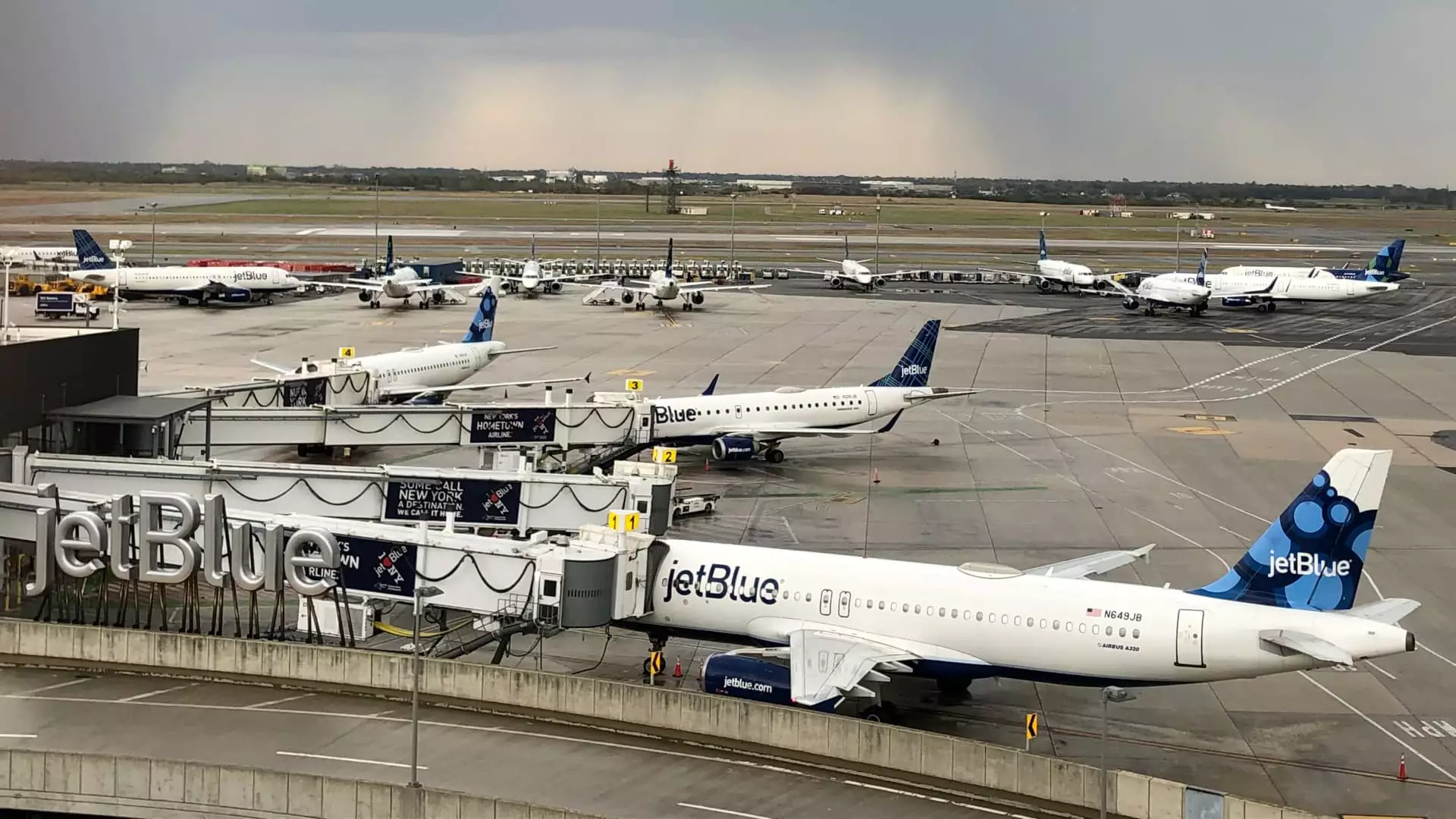In an unprecedented move for a low-cost airline that has thrived for over two decades, JetBlue Airways is set to unveil its first-ever airport lounges. This strategic pivot, aimed at attracting high-spending customers, signifies a significant evolution in the airline’s business model. Scheduled to debut in late 2024, the lounges will first grace the bustling halls of New York’s John F. Kennedy International Airport, followed by an expansion into Boston. This ambitious plan highlights JetBlue’s commitment to enhancing the travel experience for its customers while positioning itself as a competitive player in the premium airline market.
To complement the launch of the lounges, JetBlue is also collaborating with Barclays to launch a new premium credit card. This strategic move aligns with practices of established competitors like Delta, United, and American Airlines, who have successfully capitalized on lucrative credit card partnerships to bolster their revenues. The new premium card, alongside bookings in JetBlue’s Mint business class for transatlantic flights and high-level frequent flyer status, will provide select customers access to the highly anticipated lounges.
The announcement of these amenities underscores JetBlue’s intention to revamp its identity. The planned 8,000-square-foot lounge at JFK, along with an even larger 11,000-square-foot facility at Boston Logan, will feature a cocktail and espresso bar alongside light meals and workspace areas. Such facilities aim to transform the often mundane airport experience into a more sophisticated and alluring environment for travelers.
Despite the promising enhancements JetBlue is rolling out, the airline is taking a measured approach regarding lounge access. Initially, travelers on certain Mint routes, especially transcontinental flights, will not be granted access, a decision made to avoid overcrowding. Jayne O’Brien, JetBlue’s head of marketing and customer support, emphasized the importance of maintaining a comfortable environment within the lounges. By prioritizing the quality of service and accessibility, JetBlue can cultivate a more exclusive atmosphere that enhances customer loyalty and satisfaction.
This methodical approach mirrors trends observed in other airline lounges. For instance, Delta has redefined its Sky Club access amid complaints of overcrowding, while American and United have similarly created spaces dedicated to high-tier travelers. JetBlue’s careful orchestration of its lounge debut reveals a keen awareness of the challenges that accompany enhancing passenger experience without losing sight of operational efficiency.
The recent developments at JetBlue align with broader industry trends as airlines scramble to refine their offerings, thereby attracting more affluent travelers. Southwest Airlines is also considering a shift toward premium services, including extra legroom seating, as part of their ongoing strategy to adapt and thrive in a changing market. Similarly, Spirit and Frontier Airlines have begun to introduce bundles that provide additional comforts, reflecting a growing recognition of the value placed on customer experience.
In addition to these developments, credit card companies have started to establish airport lounges in key cities, a move aimed at courting consumers and enhancing their loyalty programs. This indicates a shift in expectations among travelers, who increasingly seek comfortable and high-end experiences during their airport stays.
As JetBlue prepares to embark on this new journey with its airport lounges and premium credit card offerings, the airline is not only changing its service model but is also redefining customer expectations in the low-cost airline domain. With a focus on quality, exclusivity, and profitability, JetBlue could very well emerge as a trendsetter in the aviation industry’s evolution toward more personalized travel experiences.
With these initiatives, JetBlue aims to not only compete with established legacy carriers but also to set new standards for low-cost airlines in an increasingly competitive landscape. The success of these strategies will hinge on the company’s ability to efficiently manage amenities while maintaining its image as a customer-centric, budget-friendly airline. The coming years will undoubtedly be crucial as JetBlue navigates this transformative phase in its history, forging a new path that could redefine low-cost air travel.

